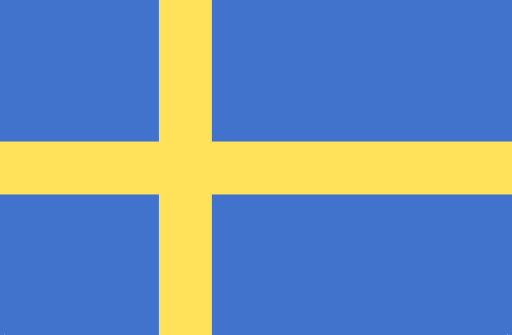Carcassonne

The origins of Carcassonne are shrouded in myth, and the legend begins with the Princess of Carcas, who ruled the city after losing her husband, Prince Ballak. He met his end abruptly in battle in the wars between Christians and Saracens in the 10th century. Legend has it that the Charlemagne army besieged the city of Carcas for a full five years and that going on the sixth, when Lady Carcas tallied their supplies, only a pig and a bag of grain were found. The pig was fattened on the grain and while the Muslim Saracens did not eat pork, they subsequently threw the pig over the city wall. The French who then found the obese trotter believed that the city was showing off its abundance and quickly abandoned the siege. Retreating from the walls the French army heard the city bells ringing for freedom, whereupon they shouted "Carcas sonne!", "Carcas rings!". And hence the city got its name, at least as far as fables go.
In the realm of reality, there are traces of settlements on the site from as early as 3500 years before Christ, but the first documented seedling of Carcassonne is from the 6th century BC. At this time, the Romans recorded in their registry a fortified small town, a Gallic oppidum, with the Celtic name Carsac. A mile or so from present-day Carcassonne, on the same plain between the Pyrenees and the Massif Central, where important trade routes have passed from both Spain and the Gironde since late antiquity. The Romans, of course, realized the strategic location and later fortified what over the years had become a busy trading post. The city gained the status of castellum and boasted walls protected by forty keeps and an equal number of gates leading to the market square in the centre.
In the 5th century, the Visigoths occupied the city after a long siege, the citadel was then once again strengthened and expanded, but they retained the basic Roman structure and continued to build in the same style. Characteristic for this type of fortification are the chubby, rotund towers and the wall that zigzags between them; a very resilient construction that stood fast for almost any contemporary weaponry. The Visigoths held the city until the eighth century, when it fell into the hands of Saracens from Barcelona. It is from this period in Carcassonne's history that the legend of the Princess of Carcas has sprung, but it is today proven that it is of a much later fabrication, a romanticization of the city's origins recorded in the 16th century.

Foto Carcassonne av ADonsky
At the end of the 11th century, the Cathars entered the French scene and among other noteworthy cities also seized Carcassonne. Further fortifications were constructed and about seventy years before the Albigensian Crusade, which finally crushed the rebellious Cathars, Carcassonne was completely surrounded by a massive city wall. From the year 1226 on, after the total victory of the French crown in southern France, it ended up a royal liege. As the castle was located on the border between France and Spain, the king decided that Carcassonne would be strengthened to full extent. After a few years of intensive construction stood forth the city wall that to this day forms the outer boundary of the Cité de Carcassonne, a mighty 3-kilometer-long double city wall with as many as 53 keeps and barbicans.
From the period after 1659, when Spain and France finally made peace and the national borders that still stand today were drawn up, the Cité de Carcassonne lost its strategic location, and the city began to expand ever more outside the city wall. However, the wall as well as the city were well looked after; Carcassonne was transformed into one of the most important economic centres of the new era and became a hub in the rapidly growing textile industry.

Foto Carcassonne av Marlys Grisson
In 1859, the French state decided that the wall was to be demolished, despite local and archaeological protests; it was argued by the state that the fortification was no longer of the present having been abandoned for hundreds of years. In 1863, after heavy debate, the decision was reversed, and an extensive restoration begun instead. At first, the architect Eugène Viollet-le-Duc accepted the challenge, but he was strongly criticized locally as he was not considered to take into account the region's climate and traditions. After his death in 1879, his pupil Paul Boeswillwald took over the works, and finally the architect Nodet completed the entire restoration. In 1997, the citadel and city wall were added to the UNESCO World Heritage List.

Foto Carcassonne av Thomas LENNE
Carcassonne of today is, in addition to being given cult status by generations for having lent its name to a widely revered board game, a popular tourist destination for anyone interested in medieval architecture and art. Alongside strolling the walled perimeter at one's own pace, it is also highly appreciated to sit back and experience the city from a slightly different perspective by means of a canal boat. In July, two festivals are organized in Carcassonne: Festival de la Cité inside the wall, and Festival de la Bastide in the lower town district. Both offer world-class theatre and music entertainment. When you visit Carcassonne, you also have to enjoy the abundance of fantastic food and wine!
Restaurants
Domaine Michaud is one of the best restaurants in the area, loved by the locals and always with an exciting menu! The restaurant is located just outside Carcassonne, in a picturesque rural setting and with a fantastic view from the hilltop. Locally sourced ingredients mean that the menu is constantly evolving, so our recommendation is to try their fantastic soups during the winter and to let yourself be surprised by the "propositions du chef" for the rest of the year! There are also many vegetarian options to enjoy.
La Barnacabe - In its Gothic venue, La Barnacabe serves haute cuisine, where every dish on the menu needs a lengthy explanation. It's the only restaurant in Carcassonne with a star in the Michelin Guide, so if you want to sample the absolute best food in town, this is the restaurant to visit; don't miss out on their foie gras! Another recommendation is a dessert consisting of bitter dark chocolate on an almond shortbread, sprinkled with coconut crumbs and served with caramel ice cream.
Robert Rodriguez's Workshop - This French retro bistro, with marble floors and Edith Piaf playing on the speakers, has a clean-cut meat and fish theme. The kitchen uses only organic and locally produced goods, and the incredibly friendly and warm atmosphere is another reason for the restaurant's popularity. The venue also has a small shop where you can buy both ingredients and finished products.
There are several market halls around Carcassonne that sell fresh produce, and a large and well-stocked outdoor market on Tuesday, Thursday and Saturday mornings. Bona fide gold mines for anyone accommodating with cooking amenities, or to scout for an upcoming grande pique-nique. Or maybe just for that simple southern French pleasure of strolling around among fantastic scents and sights, weaving between chit-chattering locals. Bienvenue à Carcassonne!
Video - Carcassonne
Map
Official website
www.tourism-carcassonne.co.uk
www.tourism-carcassonne.co.uk
Written by
pea&Rosenberg
pea&Rosenberg
Foto La Cité av Alexey Fedorenko








